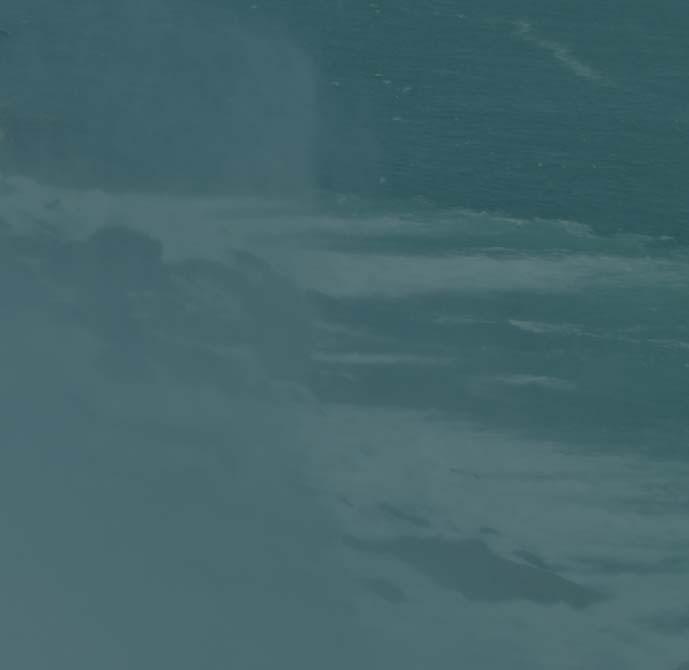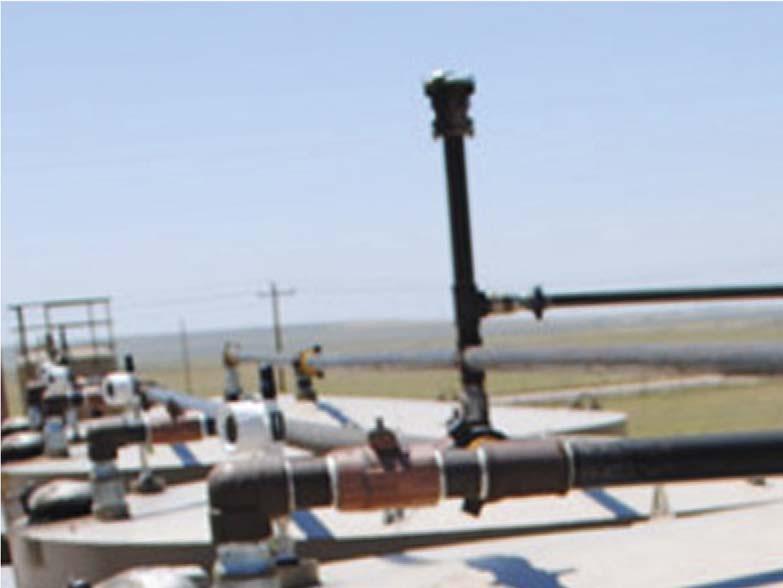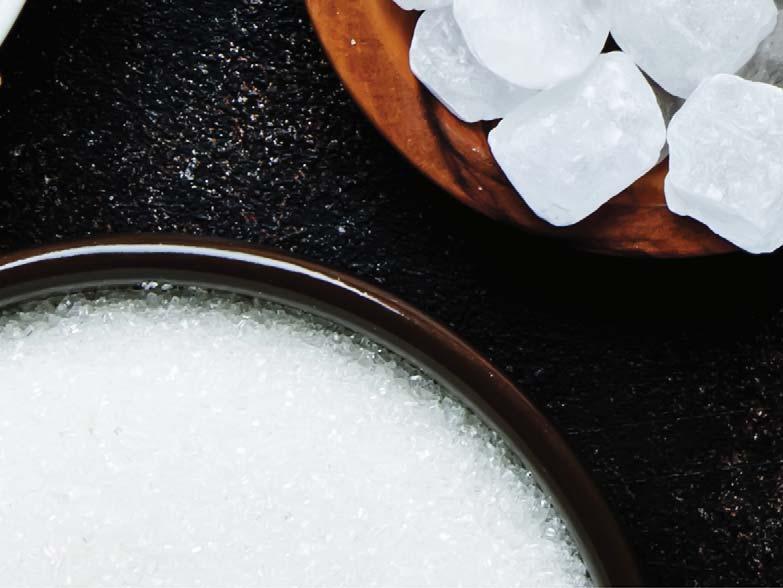
12 minute read
Down for the count?
Downforown for









Oilfield Technology correspondent, Gordon Cope,
reports that North American oil and gas has taken a dreadful thrashing, but there are signs that it is already starting to shrug off the worst.
thecount?he count?




The world’s oil and gas industry has been taking a beating, and North America’s sector is no exception. The combination of a renewed production war by Saudi Arabia and the coincidental destruction of global energy demand due to
COVID-19 has been a devastating one-two punch. Millions of barrels of crude have been shut in, hundreds of thousands of jobs lost and billions of investments written off . Therefore, the question remains if the sector will recover.

Crude
The Permian Basin in Texas and New Mexico, US, has been producing from conventional reservoirs for over a century, but it was not until the advent of horizontal drilling and hydraulic fracturing that it truly came to prominence. By early 2020, over 7000 wells were producing 5 million bpd of light, sweet crude and 10.3 billion ft 3 /d of gas, making it the most prolific basin in the world. Operators were constrained from adding more solely by the lack of pipeline takeaway capacity.
As demand fell dramatically, prices tanked into negative territory and operators scrambled to limit production. By the end of May 2020, the Permian’s oil rig count had fallen under 220, a 65% decline from 624 rigs in early March. Some important oil counties had lost much more; Andrews and Culberson counties reported 80% and 100% declines in rig counts, respectively.
Companies also began to shut in marginal wells; ConocoPhillips cut production by 200 000 boe/d, and Chevron reduced output by 125 000 bpd. A host of other companies shuttered their most unprofitable fields as crude prices fell into negative territory. By mid-2020, crude output in the Permian was below 4.3 million bpd, and analysts were predicting further drastic cuts if prices did not improve.
In early 2020, the off shore Gulf of Mexico was on track to reach 2 million bpd of production by the end of the year when COVID-19 struck. Active drilling rigs shrank and workers were evacuated from platforms to stop the spread of the disease. However, relatively few wells were shut-in. Miles of flow lines on the seabed carry crude ashore, but at these great depths, the fluids have the potential to clog if flow is cut off too long.
The Williston basin, which lies below most of North Dakota, is home to the tight, organic-rich Bakken formation. By early 2020, according to the US Energy Information Administration (EIA), production had surpassed 1.5 million bpd. When calamity hit, however, operators were even more exposed than their brethren in the Permian. The Bakken play lies far from consumption and export points and barrels are usually discounted from West Texas Intermediate (WTI) prices. Continental Resources, the largest producer in the state, went into bankruptcy and others shut in production and slashed drilling budgets. By June, production in North Dakota had fallen to slightly over 1.1 million bpd.
Troubles in the oil sands began long before 2020. For the last several years, environmental groups have waged a successful war against ‘dirty oil’, spear-heading the cancellation of major export pipelines and eff ectively throttling new investment. Super Majors such as Total sold their mining and underground assets, while producers without firm pipeline shipping contracts were forced to accept deep discounts to sell their oil, causing the loss of billions of dollars in revenues.
In May 2020, Norges Bank, which manages Norway’s sovereign wealth fund, publicly announced that it would stop investing in four oil sands companies: Canadian Natural Resources Ltd, Cenovus, Suncor and Imperial Oil. The decision was based on a recommendation from its Council on Ethics, which said they were being black-listed “due to an unacceptable risk that the company is contributing to or is itself responsible for actions or omissions which, at the aggregate company level, lead to an unacceptable level of greenhouse gas emissions.”
“To be blunt, I find [the decision] incredibly hypocritical,” said Alberta Premier, Jason Kenney in response. “Norway is actually engaged in exploring to develop new massive off shore fields to increase their production of oil, so we are not going to be lectured to by a state sovereign wealth fund 100% of whose primary revenues are generated by oil development.”
Off shore Newfoundland & Labrador (N&L) has been host to Hibernia and other fields for several decades. Over 20 billion bbls have been produced, with the prospect of a further 20 billion in potential reserves. The provincial oil and gas industry is in crisis, however. Hibernia suspended its production drilling programme, the development of Terra Nova is paused, and the West Rose project is being deferred. The Newfoundland and Labrador Oil and Gas Industries Association (Noia) says that 70% of their membership has laid off employees. The provincial government estimates that the downturn has the potential to create a loss to the provincial GDP of CAN$61 billion over the next 20 years.
By early June 2020, massive production cuts had been made throughout North America. In Alberta (Canada’s largest oil and gas province), producers had cut crude output by 1 million bpd, or 25% of capacity. In the US, an estimated 2.6 million bpd was off line, reducing production from a high of 13 million bpd in early 2020.








In May 2020, EQT, one of the major gas producers in Appalachia with an average of 4.2 billion ft 3 /d, curtailed 1.4 billion ft 3 /d (approximately one-third of production) in Pennsylvania and Ohio until prices improve. “Like others in the natural gas industry, we are anticipating a significant increase in natural gas prices from current levels in just a few months,” EQT said. At the time, delivery prices were at US$1.65/mmBtu, while the 12-month strip stood at US$2.37/mmBtu.
The tight Montney formation in northeast British Columbia and northwest Alberta contains an estimated 450 trillion ft 3 of gas reserves. The reserves lie just a few hundred miles from the west coast of North America, making it an ideal candidate to supply Asia. Advanced drilling technology has allowed operators to increase production to almost 10 billion ft 3 /d, with the intention of supplying major North American consumers (such as the oilsands), and LNG gas projects like Shell’s LNG Canada (a US$31 billion complex designed to export up to 26 million tpy from the port of Kitimat, British Columbia). The viability of export projects such as LNG Canada are being complicated by native protests, however. Coastal GasLink pipeline, designed to deliver over 2 billion ft 3 /d from northeast British Columbia to Kitimat, set off a round of rail and road blockades across the country when it became embroiled in a dispute with local First Nation traditional chiefs.
LNG
As demand in Asia plummeted, US Gulf Coast (USGC) LNG plants suff ered. According to the EIA, exports of LNG from US plants fell from 8 billion ft 3 /d in late 2019 to approximately 3 billion ft 3 /d by late June 2020, as over half of the contracted cargoes were cancelled. Prices in Asia and Europe were under US$2/mmBtu.
Plans for new-build have been thrown into disarray. Shell cancelled its joint venture (JV) with Energy Transfer’s Lake Charles LNG project. Sempra delayed its final investment decision (FID) on the proposed Port Arthur LNG in Texas, US.
Paradoxically, in spite of the trade war broiling between the US and China, US LNG imports to the latter state remain remarkably strong. Wood Mackenzie reports that China purchased 10 loads from US suppliers during April and May 2020. Analysts suspect many reasons for the purchases: spot LNG prices are at record lows, China is seeking leverage to drive down long-term contracts with Central Asia pipeline sources, and a spat with traditional LNG supplier Australia has recently heated up. Regardless, China is sticking to its pledge to add an extra US$52.4 billion of US energy supplies over the next two years.
Some light in the gloom
In early 2020, the Alberta Carbon Trunk Line (ACTL) opened. The 240 km line is designed to carry pure carbon dioxide (CO 2 ) to a mature oil field in central Alberta, where it is injected underground. The line has an initial capacity of 1.6 million tpy of CO 2 (the equivalent of ~300 000 cars), and currently services a bitumen upgrader and a fertilizer plant where CO 2 is captured from emissions. Significantly, the ACTL can be scaled up to 14.6 million tpy, about 20% of the oilsands discharge.
Oilsands developers have been pursuing lower greenhouse gas (GHG) emissions for decades. The sector as a whole has reduced emissions per barrel by 19% since 2011. As for Norge Bank’s blacklist, Suncor is on track to reduce emission intensity by 30% by 2030, and Cenovus has said it will aim for zero GHG emissions by 2050. Imperial Oil has reduced carbon intensity by at least 20% since 2013, and is developing technologies that could reduce intensities by up to 90% on new production.
As part of its COVID-19 economic response, Canada is setting aside up to CAN$1 billion for site-reclamation of ‘orphan wells’, which are defunct assets with no clear owner. The programme, which is designed to clean up the environment and ensure jobs for oilpatch workers, is being touted in the US. The Interstate Oil and Gas Compact Commission estimates that there are as many as 56 000 orphan wells in the US which pose a potential threat from leaking fluids and methane emissions. The commission, which represents 31 states, is seeking funding from the US Department of Energy.
In March 2020, Congress authorised the Federal Reserve to inject trillions of dollars into the ailing economy through loans and bond purchases. The Fed subsequently purchased bonds for ExxonMobil, Marathon and other oil companies. This aid, along with cutting royalty rates on federal lands and opening new regions for leasing, is designed to bolster the US oil and gas sector.
The help proved too little, too late for many companies. In late June 2020, Chesapeake Energy, a pioneer in shale fracking, entered Chapter 11 bankruptcy protection. The company will need to work with creditors to drastically reduce its US$9 billion in debt for any chance of survival.
By July, Canadian companies were cautiously bringing back about 20% of the 1 million bpd that had been shut-in. Husky returned half of its 80 000 bpd curtailment back online, and Cenovus half of its 60 000 bpd curtailment. Husky cited demand from American refiners for the move.
The future
US gas production, which stood at a record 94 billion ft 3 /d in late 2019, is expected to bottom out at 82.5 billion ft 3 /d in late 2020. Rystad Energy estimates that most of the 11.5 billion ft 3 /d reduction will be through natural decline (approximately 10 billion ft 3 /d), with the rest due to shut-in curtailments.
The EIA expects LNG exports to return to 8 billion ft 3 /d by late 2020, and surpass that mark in 2021. Part of the reason is that many European nations are seeking ways to reduce their reliance on Russian gas; Poland for instance, is not renewing a long-term agreement to purchase gas from Gazprom when it expires in 2022, preferring to import up to 40 billion m 3 /yr from Cheniere Energy’s US LNG plants to meet demand. Southern Mediterranean states, including Greece and Italy, are taking advantage of low LNG prices to make substantial increases in imports.
Ironically, Canada, which had been beset by a shortage of pipeline capacity due to delayed and abandoned pipeline projects, now finds itself with spare capacity aft er exports dropped by over 1 million bpd. As a consequence, crude-by-rail fell from 412 000 bpd in February 2020, to 156 000 bpd in April. While exports will eventually rise, the 1 million bpd shortfall provides a cushion until new capacity eventually comes online.
Conclusion
Much of what happens in North America during the latter half of 2020 will be predicated on the price of crude. Many shale drillers can make a profit (or break even) when the price stabilises at or above US$40. As the OPEC+ agreement to reduce production gained traction in mid-2020, prices climbed suff iciently to encourage operators to plan on returning approximately 500 000 bpd to production. The secret to rapid reversals, it turns out, is that many of the wells that were ‘shut-in’ were simply choked back, a relatively simple mechanical procedure that reduces production but does not completely curtail it or create significant reservoir problems.
In the long-term, a return to production growth will be complicated by several factors. Banker Goldman Sachs notes that global crude storage now stands at approximately 1 billion bbl, and it will likely take 2 years before that drops to five-year levels. OPEC+ has 10 million bpd of excess capacity, maintaining the potential for a return to production wars. Although demand is once again growing, observers speculate that it will not return to pre-COVID levels for several years, if ever; advances in batteries are giving electronic vehicles ever more range and flexibility.
Regardless, North America’s oil and gas sector has shown remarkable resilience against a spectrum of blows, and, in spite of its travails, will continue to thrive for decades to come.











